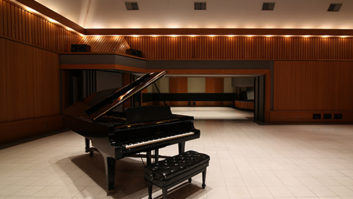They are the last of the professional audio cowboys. Whether in an independently owned rig or a corporate tractor-trailer, remote recording specialists have maintained a mystique that has survived the transformation of audio into a multinational mega-business. They’ve managed to do that with a unique combination of technical resourcefulness (not many people can wire harnesses for patchbays and spark plugs), recording and mixing acumen, and the ability to apply their talents and skills across a wide range of situations — from recording a large-venue music concert to a network awards broadcast to a critical club gig. And often in the same week.
Remote recording is one of the few threads that run the length of the professional audio industry. Starting with field recordists like Art Satherly in the 1920s and Alan Lomax in the 1930s — who exposed the world to music from outside the traditional recording centers — the notion of “taking it on the road” blossomed as rock became the primary driver of the music business in the 1960s and ’70s. Live concert albums often became the career-makers for recording artists, most notably for Peter Frampton with the 1976 blockbuster Frampton Comes Alive!
With more music on television and a dramatic increase in live concerts broadcast in prime time, remote recording has become a critical link between the two entertainment domains. Audio, it seems, has been inching toward a parity with picture in the broadcast industry, laying the groundwork for the success of new broadcast audio innovations such as Dolby Surround and now Dolby E. With the explosive growth of cable and satellite television in the 1990s, remote recording trucks proved crucial in helping the entertainment industry develop new content to fill scores of new channels. There are now, as Daily Variety has noted, more awards shows on television than ever before, and each of them has at least one audio rig parked outside the venue, making sure they all sound great. And as programming ranges further and further afield to capture content (can you say “reality TV”?), the trucks will roll with them.
The fact that remote recording vehicles are self-contained studios has compelled the leaders in that market to stay as cutting-edge as possible, artfully devising ways to integrate new systems and platforms into limited spaces. On the other hand, the owner/operators must retain the best of the classic gear to assure that the music tracks are on par with any top-flight, land-based recording facility. That’s a balancing act that deserves its own awards show.
The need for high-quality remote recording and mixing services will continue to expand for all of the reasons noted above, and because one of the Internet’s most significant effects on show business has been decentralization, making almost anywhere a potential Media Mecca. New business has also broadened the base of mobile facilities, as have new and cost-effective digital technologies. Add a computer room, and you have a Webcast remote. There are now more remote companies that can service more strata of the music and media business. And it will only keep growing.
Still, there will only be a few that occupy the high end. And those are commemorated in this edition of “Mix’s Finest.” When you only have one chance to get it right, you’d better be relying on the best.


